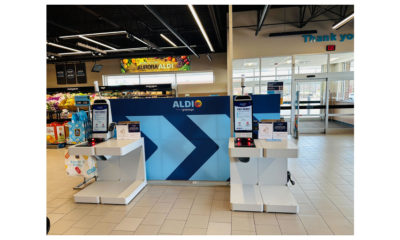THERE IS A MYTH that the average person now has an attention span of 8.25 seconds, .75 seconds less than a goldfish. With endless scrolling, it rings true, but our attention span depends on our level of interest on the task at hand, whether it’s sports, reading a book, or driving. In other words, if you create something memorable, your audience will use their attention span and engage with it. This holds true for the retail experience.
Today’s consumers are bombarded with messages and inundated with countless choices, making it increasingly challenging to build brand trust and establish lasting connections. Regardless of the industry – whether it’s b2b, b2c or DTC – integrated digital-physical human experiences enables brands to communicate their unique value in a way that is relatable to customers’ needs. Through “digital-physical-human” experiences, brands can create memorable interactions that shape perception, influence purchasing decisions and forge meaningful and emotional relationships with consumers.
An “immersive” has been the buzzword for years, but what does that mean for physical retail in a digital-first world? Long gone is the predictable consumer “sofa to shelf” purchase funnel. Today’s shopping journey is non-linear, with every point of contact a potential point of purchase. So, what is the purpose of the physical store? What does a store need, and for whom? Shopping is more than buying as it shifts from transactional towards a personal brand experiences, as seen in showrooms, marketing platforms, loyalty-building and entertainment. An integrated digital-physical-human experience leverages the best of each element.
It starts with the all-important “H.” The human connection is still the differentiator in building trust, curating experiences and serving as the brand’s expert, instilling confidence in the consumer’s decision. The “P,” the physical space, serves as a multi-sensory environment, both a 3-D selling tool and a place to experience and explore. The “D,” digital, is the key to maximizing the effectiveness of both human and physical experiences. Technology-enabled solutions need to solve real problems and have clearly defined objectives to be successful:
- Simplify buying process, recommendations and choices.
- Build value with immersive wow experiences to educate and engage that are consistent, accessible and memorable.
- Learn more about your customer, such as collecting first and zero-party data.
The next step is to ask if there is an internal solution that can be leveraged, an existing partner solution that can be purchased, or deciding whether you need to build your proprietary solution. New processes, technologies and ideas are sometimes considered risks, but the bigger risk is not evolving.
Identify your internal stakeholders and receive their input early in the process. Keep in mind that technology is a cross-functional effort with initiatives connected across multiple internal functions. Look at your initiatives to leverage various consumer touchpoints and increase their value.
Advertisement
When you are ready, start small, prototype fast, pilot in enough stores to measure success, and then build a scalable plan.
- An innovation lab is great for ideation, but real-world tests allow input and buy-in from your store teams, as they are closest to the consumer and must embrace the technology as an additive to the experience.
- Parallel path developing a support plan, whether internal resources are available or source an external partner (preferably the solution provider).
- Clearly define KPIs to measure and quantify success. Use a stage gate process to maintain momentum and continually align strategies to outcomes.
- Choose technology partners that provide the know-how to problem solve and help you “see around corners” into the future.
- Plan for the evolution of the experience with the launch. Is it device agnostic, easy to update and easy to integrate into existing platforms? Will it continually be prioritized across the enterprise: sales, operations, marketing and IT roadmaps?
The key takeaway is ensuring your customer engagement efforts are truly integrated digital-physical-human experiences. If it is, it will be embraced by the consumer and your store staff, and you will get the intended results.

 Photo Gallery2 weeks ago
Photo Gallery2 weeks ago
 Headlines5 days ago
Headlines5 days ago
 Headlines2 weeks ago
Headlines2 weeks ago
 Headlines2 weeks ago
Headlines2 weeks ago
 Headlines4 days ago
Headlines4 days ago
 Headlines2 weeks ago
Headlines2 weeks ago
 Headlines3 days ago
Headlines3 days ago
 Designer Dozen1 week ago
Designer Dozen1 week ago



















